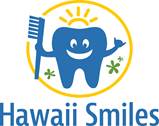DOH Releases Statewide ‘Hawaii Smiles’ Report
The Hawai‘i Department of Health recently released it’s “Hawaii Smiles” statewide surveillance report.
The report showed a need for improvements in the oral health of Hawai‘i’s children.
The survey confirmed that Hawai‘i children have the highest prevalence of tooth decay in the nation.

The Hawai’i Smiles Survey found that Hawai‘i children have the highest prevalence of tooth decay in the nation.
Photo Courtesy.
The baseline results were based on data collected from more than 3,000 third grade students in 67 public elementary schools during the 2014-15 school year.
Third graders were selected because this is the same target population of national oral health surveillance surveys and provided a basis for a comparison with national statistics.
The survey was funded by the US Centers for Disease Control and Prevention and the US Department of Health and Human Services, with additional local funding from the HDS Foundation and the Kaiser Foundation.
“With support from principals and their staff at elementary schools within the Department of Education, we now have solid data on which to build our programs,” said Dr. Virginia Pressler, director of the Hawai’i State Department of Health. “We can now begin to fill in the gaps in oral health for children by joining with various partners in the community and harnessing the latest technological tools available.”
“Our goal is to make quality oral health care more accessible for all Hawai‘i children by offering culturally appropriate, community-based prevention programs, screening and referral services, and restorative dental care.”
The following are the survey’s key findings:
- More than 7 out of 10 third graders (71%) are affected by tooth decay. That is substantially higher than the national average of 52%.
- About 7% of Hawai‘i third grade children are in need of urgent dental care because of pain or infection.
- There are significant oral health disparities by income. Children from low-income families, as defined as those who are eligible for the National School Lunch Program, have a disproportionate amount of tooth decay. About 31% of children eligible for National School Lunch Program have untreated tooth decay compared to 13% who are not eligible.
- The need for urgent dental care is about six times higher in low-income children compared to their higher-income peers (12% versus 2% respectively).
Within Hawai‘i’s multi-ethnic environment, there are also oral health disparities:
- Micronesian and other Pacific Islanders, including those from Guam, Samoa, Tonga and other Pacific Islands, have the highest prevalence of untreated decay. About 56% of Micronesian and 41% of other Pacific Islander children have untreated decay – four times higher than the prevalence among Caucasian (13%) and Japanese (11%) children.
- Ethnic disparities also show a more pronounced gap for urgent dental care: 30% of Micronesian and 23% of other Pacific Island children have dental pain and/or infection compared to only 3% of Caucasian and 2% of Japanese children.
“We recognize that everyone has an important role in improving and promoting oral health for children,” said Mark Yamakawa, president and chief executive officer of Hawaii Dental Service, which provided funding to underwrite the cost of the survey. “We are now partnering with the Department of Health and other nonprofit community organizations to improve the oral health of keiki in our community.”
The survey showed that all Hawai‘i children do not take advantage of preventive measures to improve their oral health.
More than 60% of children in Hawai‘i do not have protective dental sealants, a cost-effective clinical intervention to prevent tooth decay in molars.
The HDS Foundation, the charitable arm of Hawaii Dental Service, has provided funding to the DOH for a school-based dental sealant program for students at high risk for cavities; funding to Women, Infants, Children, a federal nutrition program for low-income families to provide fluoride varnishes for young children; and educational materials for Head Start early-education programs.
HDS also recently launched a “Dentist by One” public service campaign and outreach program to dentists and pediatricians to encourage parents to take their children to the dentist before their first birthday.













